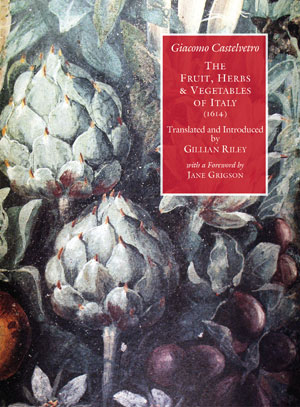Description
Giacomo Castelvetro, Gillian Riley (tr.)
The Fruit, Herbs and Vegetables of Italy (1614)
| • One of the nine books that never leaves the overflowing shelf of Rachel Roddy’s desk is Gillian Riley’s translation.
‘A lively, opinionated and overwhelmingly gentle book about the Italian fruits and vegetables Castelvetro loved’ Rachel Roddy, The Guardian, April 2019 • ‘Such a vivid thing for us today’, Jane Grigson •With a foreword by Jane Grigson This is a new edition of a classic of the early 17th-century. The book was written by the Italian refugee Giacomo Castelvetro. When he came to England, he was horrified by our preference for large helpings of meat, masses of sugar and very little greenstuff. The Italians were both good gardeners, and had a familiarity with many varieties of vegetable and fruit that were as yet little known in England. He circulated his Italian manuscript among his supporters, dedicating it to Lucy, Countess of Bedford. Gillian Riley’s translation of this document has been recognised as being fluent, entertaining and accurate from its first appearance in 1989. Castelvetro takes us through the gardener’s year, listing the fruit and vegetables as they come into season, with simple and elegant ways of preparing them. Practical instructions are interspersed with tender vignettes of his life in his native city of Modena. He writes of children learning to swim in the canals of the Brenta, strapped to huge dried pumpkins to keep them afloat; Venetian ladies ogling passers-by from behind screens of verdant beanstalks; sultry German wenches jealously hoarding their grape harvest; and his intimate chats with Scandinavian royalty about the best way to graft pear cuttings and discomfort the Pope. This edition is printed in two colours, has a graceful typography (using the Galliard typeface) and generous layout, and is equipped with a knowledgeable and informative introduction by the translator. Gillian Riley has become England’s chief interpreter of the history of Italian cooking. Her Oxford Companion to Italian Food (2008) has been widely praised, and her books about food in art have commanded much support. |

